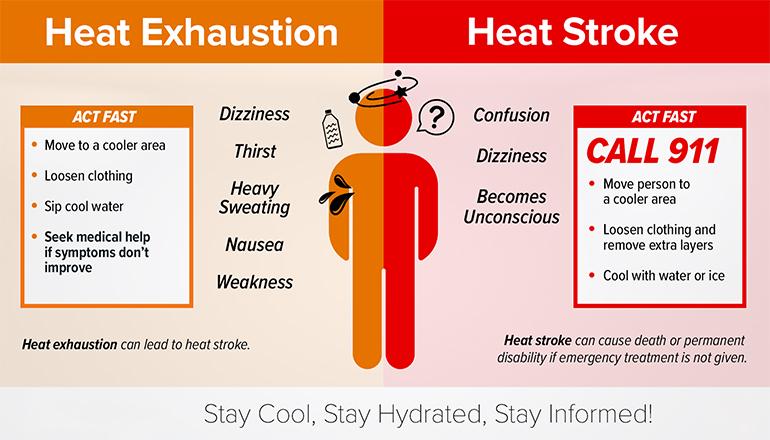As summer temperatures rise, the risk of heat-related illnesses increases, especially for farmers and outdoor workers. University of Missouri Extension health and safety specialist Karen Funkenbusch emphasizes the importance of water, rest, and shade to help workers beat the heat and avoid potentially fatal conditions.
“During heat waves, farmers and ranchers face an increased risk of heat-related illnesses, which can be severe if untreated,” Funkenbusch said. “New workers need time to adjust to the heat. Healthy workers can get used to higher temperatures over a two- or three-day period and fully acclimate within seven to ten days.”
Funkenbusch advises new workers or those returning from vacations or sick leave to gradually increase their workloads and take regular breaks to build heat tolerance. She also recommends monitoring co-workers for signs of illness, especially those performing heavy tasks or wearing protective clothing.
Recognizing Heat-Related Illnesses
- Heat Rash: Caused by clogged sweat glands due to excessive sweating, heat rash appears as pimples and white bumps. It usually resolves with mild temperatures.
- Heat Cramps: Loss of salt and electrolytes leads to heat cramps, which can occur hours after exposure. They affect the arms, legs, and abdomen. Replenishing fluids and electrolytes is crucial.
- Heat Exhaustion: This follows heavy sweating and symptoms include nausea, confusion, headache, and thirst. Moving to a cooler environment and drinking electrolyte-rich fluids can help.
- Heat Stroke: A life-threatening condition where victims may stagger, become irritable, lose consciousness, have seizures, or vomit. Immediate medical attention is essential.
Preventive Measures
Funkenbusch offers several tips to prevent heat-related illnesses:
- Drink a cup of water every 15-20 minutes and avoid caffeine, carbonated, and alcoholic beverages.
- Take rest breaks in the shade to allow the body to cool down.
- Wear hats and light-colored, loose-fitting clothing.
- Slightly increase daily salt intake to replace salt lost through sweat.
- Review medications that might affect heat resistance.
- Ensure your air conditioner is efficient and use fans to circulate air if your home lacks air conditioning.
- Plan ahead with an adequate supply of water, shade devices, protective clothing, and sunscreen for outdoor work.
- Serve cold foods to avoid cooking and baking.
- Use the heat index rather than just temperature as a measure of heat risk. More information on the heat index can be found on the weather service website.
Heat Safety for Children
The risk of heatstroke in cars is also highlighted by Funkenbusch, who notes that it’s easier than many parents think to make a fatal mistake. On average, 37 children die from heatstroke in cars each year in the U.S. according to Kids and Cars.
Funkenbusch warns parents that the interior temperature of a car can rise more than 20 degrees in just 10 minutes and can become deadly even with windows slightly open.
Safety Tips for Parents and Caregivers
- Always check the back seat before walking away from the vehicle.
- Place necessary items like phones or briefcases in the back seat to ensure you check them.
- Keep vehicles locked and keys out of reach of children to prevent them from climbing inside unsupervised.
- If you see a child alone in a vehicle, ensure their safety and call 911 if they appear distressed.
As temperatures soar, staying vigilant and taking preventive measures can save lives. Whether working outdoors or ensuring the safety of children and pets, following these guidelines can help combat heat-related illnesses effectively.


